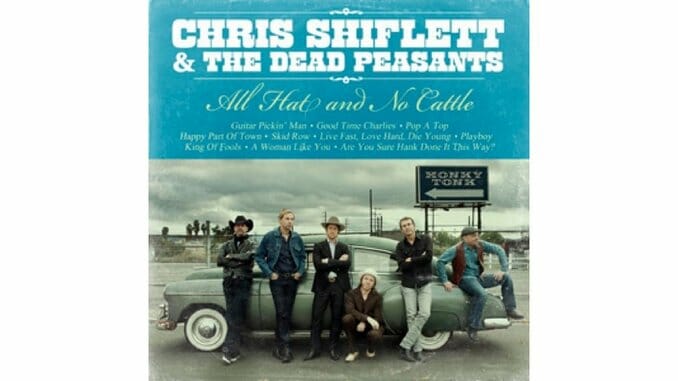Chris Shiflett & The Dead Peasants: All Hat and No Cattle

Though he’s been ingrained in punk and alternative rock for the vast majority of his professional career, Foo Fighters guitarist Chris Shiflett has always had a soft spot for country music, which became the basis for his solo/side project Chris Shiflett & The Dead Peasants.
The Dead Peasants released their debut self-titled album back in 2010 as a way for Shiflett to purge himself of some of those Americana influences that had been building up in his subconscious over the years. However, during the touring cycle for Wasting Light, the latest Foo Fighters record, Shiflett decided that if he really wanted to commit to playing this kind of music, he was going to have to totally immerse himself in it and stay away from the hard rock style he’d been grown accustomed to.
The result is All Hat and No Cattle, an album that features covers of nine classic honky-tonk songs by artists such as Don Rich, Waylon Jennings, Faron Young, Buck Owens and Merle Haggard (plus one new original song, “A Woman Like You”).
These covers are basically all true to the original songs, with the biggest differences being Shiflett and The Dead Peasants’ ability to utilize high-quality recording equipment to get a much fuller and more powerful sound out of their instruments. Other than that, though, the arrangements are the same as the original recordings, with a few exceptions, such as the extended outro at the end of their version of Wynn Stewart’s “Playboy” or the opening organ sound at the beginning of Waylon Jennings’ “Are you Sure Hank Done it This Way” (as well as some extra jamming at the end).
-

-

-

-

-

-

-

-

-

-

-

-

-

-

-

-

-

-

-

-

-

-

-

-

-

-

-

-

-

-

-

-

-

-

-

-

-

-

-

-








































